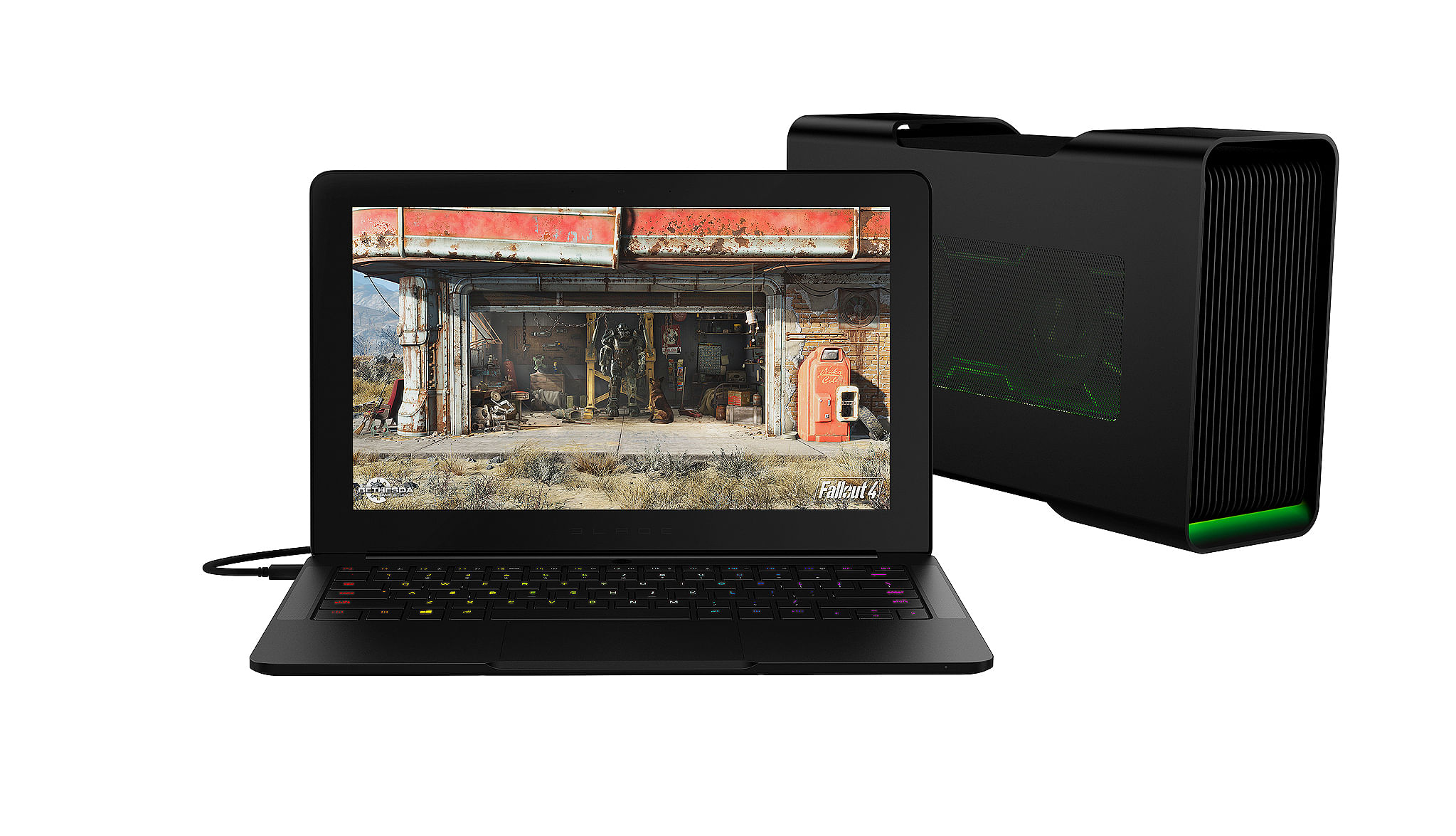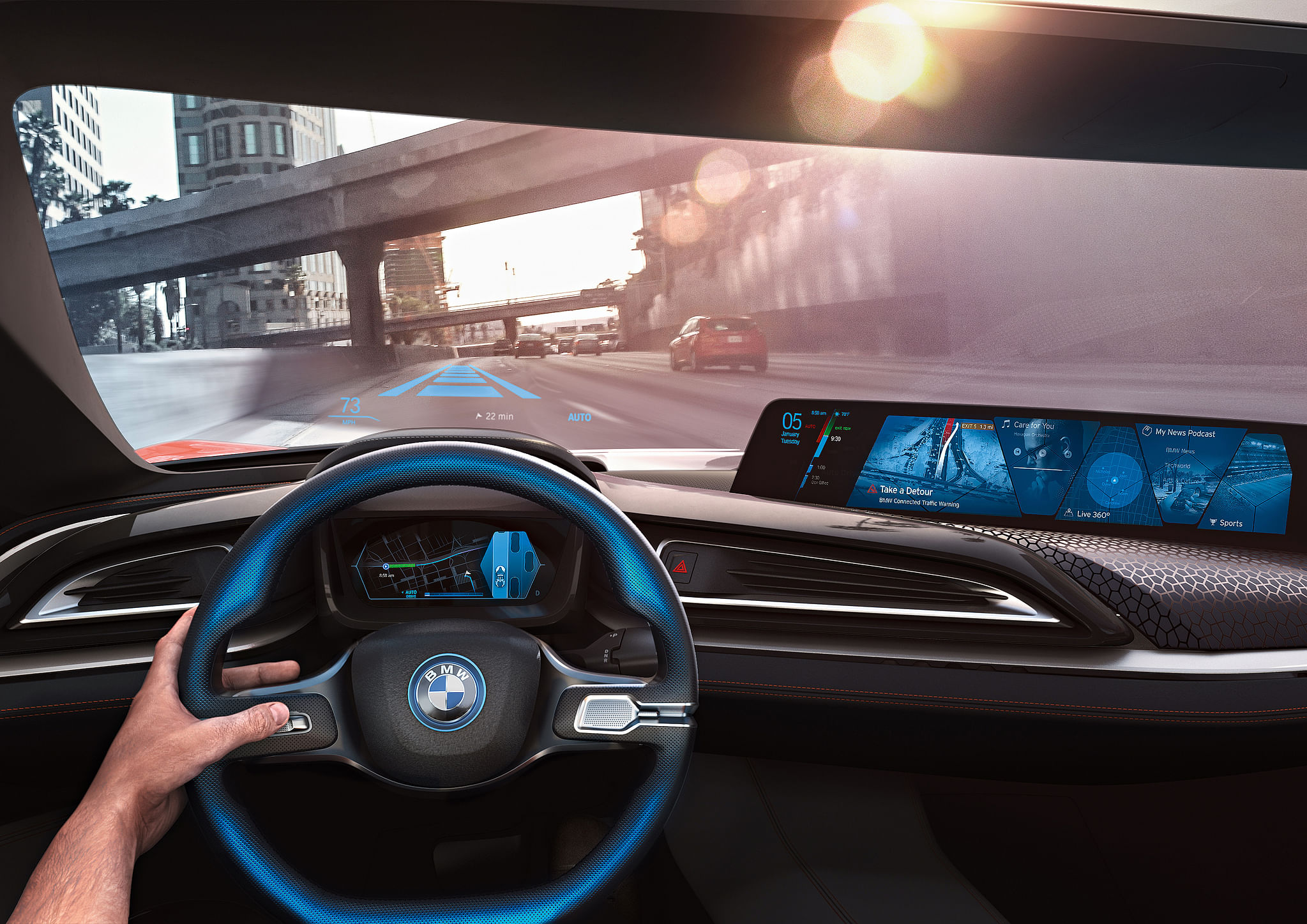Oculus Rift
In August 2012, a Kickstarter campaign by start-up Oculus VR was launched to fund the development of a virtual reality headset called Oculus Rift. It garnered over US$2.5 million (about S$3.5 million) in funding. Facebook bought Oculus VR for US$2 billion in July 2014.
The Oculus Rift VR headset finally has a price and a delivery date. It is available for pre-order at US$599 with a delivery date of March this year. But reports point to June as being more probable.
Singapore is not one of the 20 countries to get the headset in the first wave. So what are we missing?

The Rift VR head-mounted display headset allows users to experience an immersive virtual world in which they can move, interact with objects, and shoot weapons. The headset needs to be connected to a PC for it to work.
The Rift VR comes with Eve: Valkyrie space simulation game, which my colleague Vincent Chang previously said will be the killer game for virtual reality systems.

Razer Blade Stealth and Razer Core
PC gaming company Razer has launched its first Ultrabook, the Blade Stealth. It features the latest Intel Core i7 processor, a 12.5-inch touchscreen display of up to 3,840 x 2,160 pixel resolution, 8GB of system memory and up to 512GB of flash storage.
It comes with two USB 3.0 ports and a Thunderbolt 3 port. All this in a sleek black aluminium chassis that is only 13.1mm thick, which allows the Ultrabook to tip the scales at a mere 1.25kg.
And here comes the twist. Razer has also launched the Razer Core desktop graphics dock along with its Ultrabook. The Core is a plug-and-play external graphics enclosure that allows you to insert any desktop graphics card (sold separately).
The Blade Stealth has an integrated Intel Graphics 520 graphics processor that does not cut it for gaming. But connect the Core to the Blade Stealth via a Thunderbolt 3 connection, and the Ultrabook suddenly becomes a powerful gaming laptop.

BMW i Vision Future Interaction
German carmaker BMW showed its Car BMW i Vision Future Interaction concept in which a high-resolution display shows content that corresponds to different driving situations. You can control the in-car navigation and entertainment system without touching the display.
So when the car is in an automated mode or self-driving, the display might show e-mail messages, Internet content or other audio-visual offerings. However, when the driver takes over the steering wheel, the display will automatically change to show relevant information such as driving routes and road conditions. Driving assists will help the driver stay in lane to avoid accidents.
BMW's new AirTouch system helps drivers control all the communication and entertainment functions. It is like Xbox Kinect, but in a car. This allows the display to be operated like a touchscreen without your having to touch it, thus avoiding the danger of losing concentration while driving.

Fitbit Blaze
Fitbit has entered the smartwatch market with the Blaze - a smartwatch aimed at fitness buffs and meant to be the only wearable they will ever need.
It has a built-in heart-rate monitor, GPS capability and on-screen workouts. So, you do not need a smartphone in order to do your workouts or runs.
In addition, its SmartTrack automatic exercise recognition system automatically recognises and records continuous movement activities such as biking, hiking, Zumba and even tennis.
Thus, you are always motivated to get all your workout stats recorded using the Blaze.
It also tracks your all-day physical activities and automatically monitors your sleep. When paired with your smartphone, its 240x180-pixel colour touchscreen display will show notifications such as incoming calls, text messages and calendar alerts. It has a five-day battery life.
The Fitbit Blaze will retail globally for S$318 in March.

Casio WSD-F10 Smart Outdoor Watch
It was only a matter of time before timepiece giant Casio entered the smartwatch market. At CES 2016, Casio unveiled its WSD-F10 Smart Outdoor Watch.
In line with Casio watches' reputation for ruggedness and durability, this Android Wear smartwatch is water-resistant down to 50m and complies with the MIL-STD-810G military standard endurance tests specified by the US military. In other words, it can take a lot of punishment in the great outdoors, unlike other smart-watches.
It also comes with a digital compass, air pressure sensor and altimeter - tools you need for the outdoors.
The WSD-F10 has two screens in a unique dual-layer structure - a colour LCD and another monochrome LCD.
When you activate the Timepiece mode, the colour LCD along with all the smart features will be shut down. The monochrome LCD takes over to just display the time.
Furthermore, the Timepiece mode allows the watch's battery life to stretch to a month - much longer than the one-day battery life when used as an Android Wear smartwatch.
 PHOTO: EHANG
PHOTO: EHANG Ehang 184 AAV
You can fly this drone - and it can also fly you around.
The Ehang 184 autonomous aerial vehicle (AAV) can carry a passenger of up to 120kg.
It is also designed with full redundancy in mind. If any of its components malfunctions, it will immediately land in the nearest possible area safely.
It has eight propellers that are mounted on four arms - two on each arm - thus the name 184 (one passenger, eight propellers and four arms).
Fully powered by electricity with eight motors, giving it a total power output of 142hp, it is able to reach a maximum speed of 100kmh and a maximum height of 3,500m. It can hover at sea level for up to 23min.
This AAV just might be the future of transportation.
Compiled by Trevor Tan
